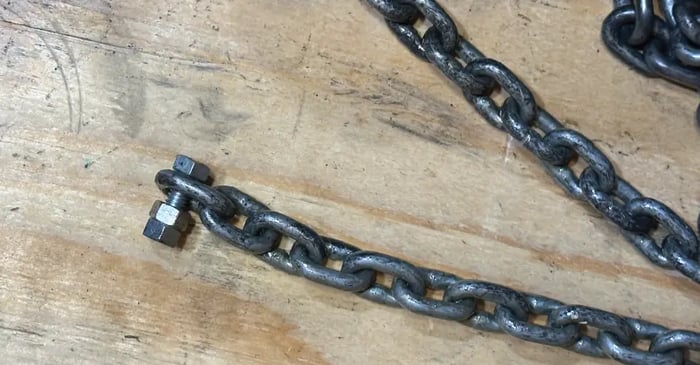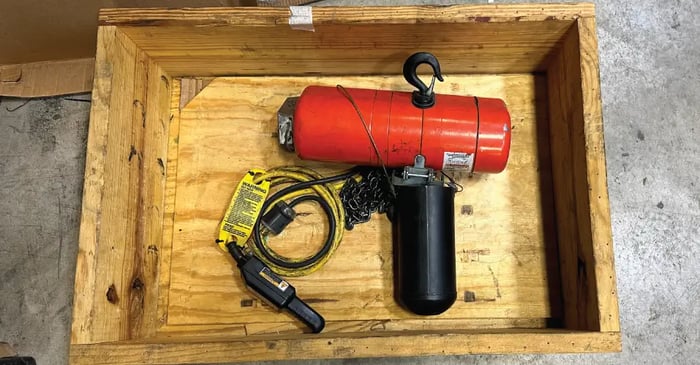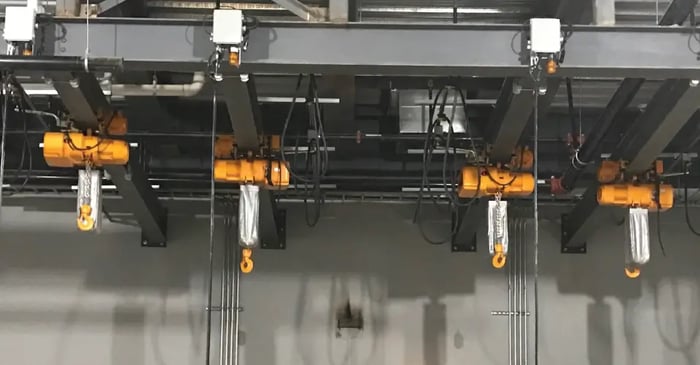
How to Dead End a Hoist Chain: Dos and Don'ts
The efficacy and safety of a hoist largely depend on its proper setup and use. One aspect that's important to the functioning of a hoist is knowing how to dead end a hoist chain. Incorrectly dead-ending a chain can lead to equipment damage, load drops, or, in the worst cases, severe injuries. Let's delve into the dos and don'ts of dead-ending a chain for a hoist.
Understanding Dead-ending
Before diving into the techniques and guidelines, it's essential to understand what "dead-ending" means. Dead-ending refers to the way the end of a chain is securely terminated or anchored. This ensures the hoist operates correctly and safely supports the weight it's lifting.
Dos of Dead-ending a Chain
- Select the Right Chain: Before even thinking about dead-ending, ensure the chain you're using is of the correct type and capacity for your hoist. Using a chain with a lower capacity than the hoist or the weight it's lifting can be extremely dangerous.
- Use Appropriate Attachments: Depending on the hoist type and design, various attachments can be used to dead-end the chain. These might include specific connectors, chain terminators, or chain anchors. Always ensure that the attachment is compatible with the chain and hoist model you're using.
- Follow Manufacturer's Guidelines: Most hoist manufacturers provide detailed instructions on dead-ending the chain. Always follow these guidelines to the letter. They have been tested and optimized for safety and efficiency.
- Inspect Regularly: Dead-ending is not a 'set it and forget it' operation. Periodically inspect the chain and its dead-end connection. Look for signs of wear, corrosion, or any other damages. This regular inspection can avert potential failures.
- Ensure a Secure Fit: When attaching the chain's end, make sure it's securely fixed. There should be no room for slippage or movement.
- Test After Dead-ending: Before lifting any loads, test the hoist with a weight that's within its safe working load limit. This will help identify any potential issues with the dead-ending process before they can become serious problems.
Don'ts of Dead-ending a Chain
- Don’t Use Makeshift Connections: One of the most common mistakes is using makeshift or improvised connectors. While it might seem like a simple fix, these makeshift solutions can give way under pressure, causing accidents.
- Don’t Ignore Wear and Tear: Over time, chains and connectors will wear out. Ignoring this wear and tear can lead to failures. Replace any parts that show signs of significant wear.
- Don't Overload the Hoist: Even if the chain is dead-ended perfectly, it won’t make a difference if the hoist is overloaded. Always ensure that the weight of the load is within the hoist's and chain's capacity.
- Avoid Twisting or Kinking the Chain: When dead-ending, ensure that the chain is straight and free of any twists or kinks. A twisted or kinked chain can compromise its strength and lead to failures.
- Don’t Neglect Maintenance: Regular maintenance goes beyond just inspecting the chain. It also involves lubricating moving parts, checking the hoist's functionality, and ensuring that all safety protocols are in place.
- Don't Assume One Size Fits All: Different hoists and chains might have varying requirements for dead-ending. Just because a method works for one doesn't mean it's suitable for all. Always check and follow specific requirements for the equipment at hand.
Dead-ending a hoist chain is a critical operation that demands attention to detail, the right tools, and adherence to safety protocols. By following the dos and avoiding the don'ts, one can ensure that the hoist operates safely and efficiently.
In environments where heavy lifting is a part of the routine, there's no room for shortcuts or compromises. Always remember that the safety of the operator and those in the vicinity hinges on the integrity of the equipment. Proper dead-ending is not just about ensuring the equipment's longevity: it's a critical step in ensuring safety for everyone involved.




